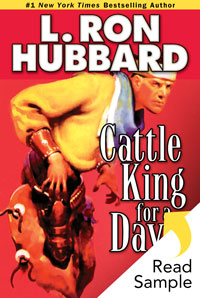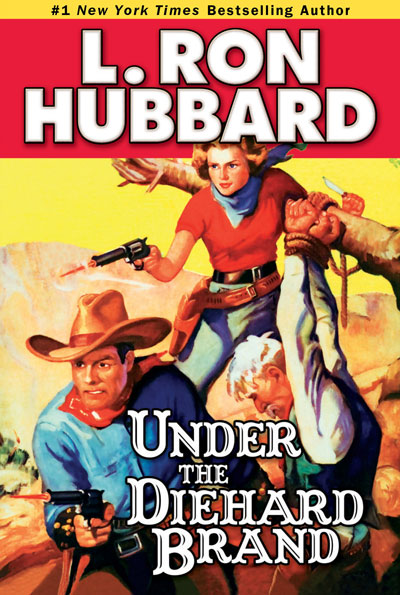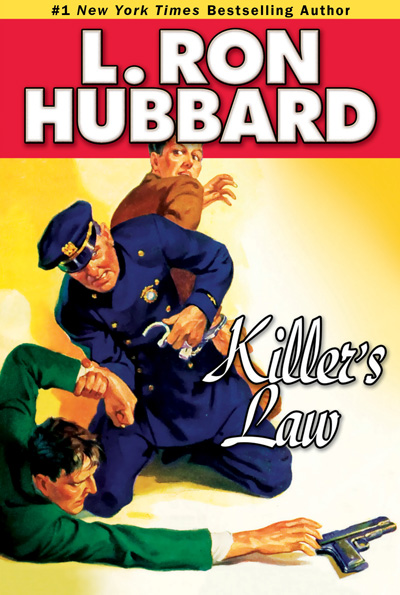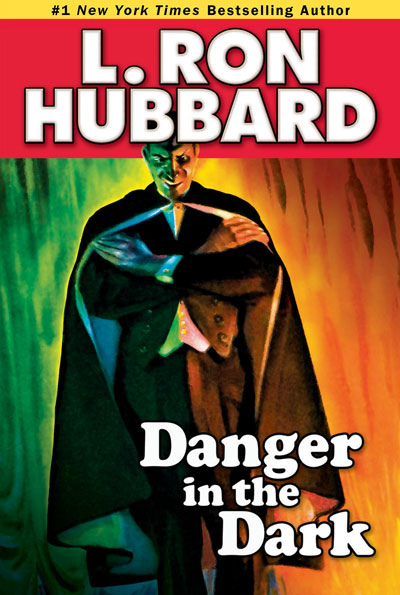Cattle King for a Day Glossary
Stories from the Golden Age reflect the words and expressions used in the 1930s and 1940s, adding unique flavor and authenticity to the tales. While a character’s speech may often reflect regional origins, it also can convey attitudes common in the day. So that readers can better grasp such cultural and historical terms, uncommon words or expressions of the era, the following glossary has been provided.
applehorn: style of saddle so named from the small horn whose top was round like an apple, compared to the broad, flat horns of saddles it replaced.
batwings: long chaps (leather leggings the cowboy wears to protect his legs) with big flaps of leather. They usually fasten with rings and snaps.
bead on, take a: to take careful aim at. This term alludes to the bead, a small metal knob on a firearm used as a front sight.
belly robber: a name often given to the cook, especially if he was a poor one.
bonnet strings: buckskin thongs hanging from each side of the brim of a cowman’s hat at its inner edges. The ends are run through a bead or ring, and by pulling these up under the chin, the cowboy has a hat that will stay on during a fast ride or windy weather.
Bull: Bull Durham brand of tobacco.
cantle: the raised back part of a saddle for a horse.
cayuse: used by the northern cowboy in referring to any horse. At first the term was used for the Western horse to set it apart from a horse brought overland from the East. Later the name was applied as a term of contempt to any scrubby, undersized horse. Named after the Cayuse Indian tribe.
chuck wagon: a mess wagon of the cow country. It is usually made by fitting, at the back end of an ordinary farm wagon, a large box that contains shelves and has a hinged lid fitted with legs that serves as a table when lowered. The chuck wagon is a cowboy’s home on the range, where he keeps his bedroll and dry clothes, gets his food and has a warm fire.
circuit court: a court that moves from place to place within a particular judicial district.
Colt: a single-action, six-shot cylinder revolver, most commonly available in .45- or .44-caliber versions. It was first manufactured in 1873 for the Army by the Colt Firearms Company, the armory founded by American inventor Samuel Colt (1814–1862) who revolutionized the firearms industry with the invention of the revolver. The Colt, also known as the Peacemaker, was also made available to civilians. As a reliable, inexpensive and popular handgun among cowboys, it became known as the “cowboy’s gun” and a symbol of the Old West.
concentrate: the desired mineral that is left after impurities have been removed from mined ore.
coulee: a deep ravine or gulch, usually dry, that has been formed by running water.
crosstrees: on a pack saddle, the crossed pieces of wood connected to the front and back parts of the saddle. Crosstrees were used to distribute the pressure and load more evenly upon the animal, providing greater comfort.
cyanide mining: a highly toxic method of extracting gold and other metals from raw ore. Cyanide is applied to the ore, where it bonds with microscopic flecks of gold which are then recovered from the cyanide solution.
Derringer: a pocket-sized, short-barreled, large-caliber pistol. Named for the US gunsmith Henry Deringer (1786–1868), who designed it.
diamond hitch: a hitch is a kind of knot used to fasten one thing temporarily to another. The diamond hitch is a common method of roping a pack on an animal. It keeps the cargo from moving in any direction by holding it on the animal’s back and when completed, the rope forms the figure of a diamond on top of the pack.
double-bitted ax: an ax that has cutting edges on both sides of the head.
drew rein: from “draw in the reins,” meaning to slow down or stop by exerting pressure on the reins.
drifts: horizontal (or nearly horizontal) passageways in a mine.
dry-gulch: to kill; ambush.
false-front: describes a façade falsifying the size, finish or importance of a building.
faro: a gambling game played with cards and popular in the American West of the nineteenth century. In faro, the players bet on the order in which the cards will be turned over by the dealer. The cards were kept in a dealing box to keep track of the play.
feeder: from “feeder line,” a branch of a main transportation line, as of a railroad.
G-men: government men; agents of the Federal Bureau of Investigation.
hardtack: a hard saltless biscuit.
Henry: the first rifle to use a cartridge with a metallic casing rather than the undependable, self-contained powder, ball and primer of previous rifles. It was named after B. Tyler Henry, who designed the rifle and the cartridge.
hog leg: another name for the popular Colt revolver also known as the Peacemaker.
hoss: horse.
hostler: a person who takes care of horses, especially at an inn.
jingle bobs: little pear-shaped pendants hanging loosely from the end of a spur (small spiked wheel attached to the heel of a rider’s boot); their sole function is to make music.
larruping: beating or flogging.
livery stable: a stable that accommodates and looks after horses for their owners.
lode: a deposit of ore that fills a fissure in a rock, or a vein of ore deposited between layers of rock.
neck-reined: guided a horse by pressure of the reins against its neck.
Peacemaker: nickname for the single-action (that is, cocked by hand for each shot), six-shot Army model revolver first produced in 1873 by the Colt Firearms Company, the armory founded by Samuel Colt (1814–1862). The handgun of the Old West, it became the instrument of both lawmaker and lawbreaker during the last twenty-five years of the nineteenth century. It soon earned various names, such as “hog leg,” “Equalizer,” and “Judge Colt and his jury of six.”
pill-throwers: gunmen; lead slingers.
pink tea: formal tea, reception or other social gathering usually attended by politicians, military officials and the like.
pinwheel: a movement or trick with a gun; the gun is held in virtual firing position except that the forefinger is not in the trigger guard. The gun is flipped into the air so that it revolves and the butt drops naturally into the palm of the hand.
puncher: a hired hand who tends cattle and performs other duties on horseback.
quartz: a common, hard mineral, often with brilliant crystals. It is generally found in large masses or veins, and mined for its gold content.
quirt: a riding whip with a short handle and a braided leather lash.
raked: slanted away from an upright position.
ramrod: a rod used for ramming down the charge in a gun that is loaded through the muzzle.
rannies: ranahans; cowboys or top ranch hands.
redeye: cheap, strong whiskey.
rein in: stop or slow one’s horse by pulling on the reins.
remuda: a group of saddle horses from which ranch hands pick mounts for the day.
riata: a long noosed rope used to catch animals.
rifled: stolen; taken by force.
road agents: stagecoach robbers in the mid- to late-nineteenth-century American West.
rotgut: raw, inferior liquor.
run-over: of boots, where the heel is so unevenly worn on the outside that the back of the boot starts to lean to one side and does not sit straight above the heel.
scatter-gun: a cowboy’s name for a shotgun.
Scheherazade: the female narrator of The Arabian Nights, who during one thousand and one adventurous nights saved her life by entertaining her husband, the king, with stories.
scorchers: branding irons.
shaver: a young boy.
single-action Army: Colt Single Action Army (SAA); a single-action, .45-caliber revolver holding six rounds. It was first manufactured in 1873 by the Colt Firearms Company, the armory founded by Samuel Colt (1814–1862). Initially produced for the Army to incorporate the latest metallic-cartridge technology, civilian versions were also made available in .32-, .38-, .41- and .44-calibers, among many others. The SAA, also referred to simply as Colt or the Peacemaker, gained popularity throughout the West and has become known as the “cowboy’s gun.”
Sioux shield: a shield of the Sioux (Indian people of North America). The shield was used for physical and spiritual protection. It was circular in shape and approximately eighteen inches in diameter.
sluice: sluice box; a long, narrow wood or metal artificial channel that water passes through when put in a creek or stream to separate the dirt and junk material away from the gold. Gold, a very dense metal, stays in the sluice box because of its heavy weight.
sombrero: a Mexican style of hat that was common in the Southwest. It had a high-curved wide brim, a long, loose chin strap and the crown was dented at the top. Like cowboy hats generally, it kept off the sun and rain, fended off the branches and served as a handy bucket or cup.
sougans: bedrolls; blankets or quilts with a protective canvas tarp for use on a bunk or on the range.
sowbelly: salt pork; pork cured in salt, especially fatty pork from the back, side or belly of a hog.
spittoon: a container for spitting into.
stamp mill: a machine that crushes ore.
tongue: the pole extending from a carriage or other vehicle between the animals drawing it.
Wellington boots: a boot worn and popularized by Arthur Wellesley, First Duke of Wellington and fashionable among the British aristocracy in the early nineteenth century. The First Duke had instructed his London shoemaker to modify the eighteenth-century Hessian boot (the standard issue footwear for the military, especially officers). The resulting new boot designed in soft calfskin leather had the trim removed and was cut closer around the leg. The heels were low cut, stacked around an inch, and the boot stopped at mid-calf.
West Point: US Military Academy in New York. It has been a military post since 1778 and the seat of the US Military Academy since 1802.
whitewash: a white liquid that is a mixture of lime or powdered chalk and water, used for making walls or ceilings white.
Winchester: an early family of repeating rifles; a single-barreled rifle containing multiple rounds of ammunition. Manufactured by the Winchester Repeating Arms Company, it was widely used in the US during the latter half of the nineteenth century. The 1873 model is often called “the gun that won the West” for its immense popularity at that time, as well as its use in fictional Westerns.
wind devil: a spinning column of air that moves across the landscape and picks up loose dust. It looks like a miniature tornado but is not as powerful.











